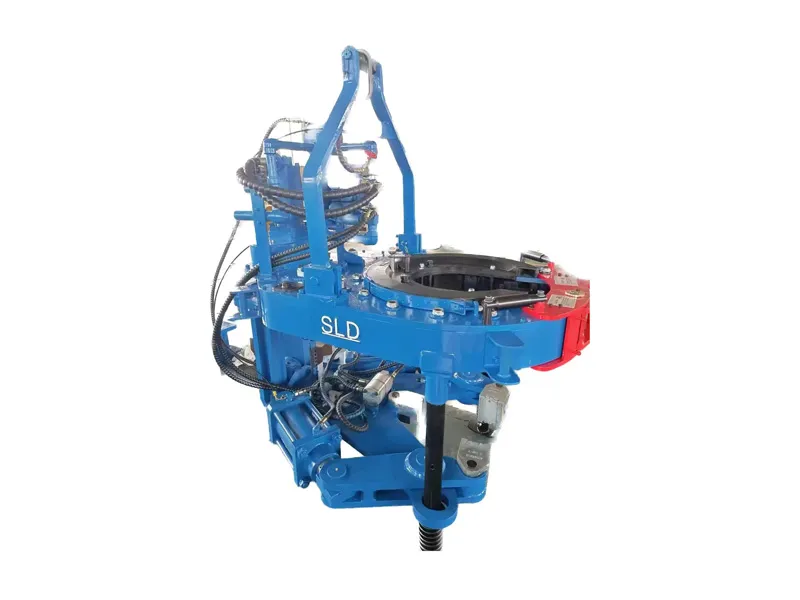Why do I need a Bucking Unit?
Browse services
- Petroleum and Gas
- What are the advantages of using a Bucking Unit?
- Common Bucking Unit Operation Errors and How to Avoid Them?
- What are the safety checks before operating a Bucking Unit?
- Bucking Unit Safety Operating Procedures
- How to Use the Operator Panel to Control a Bucking Unit
- How to Calibrate a Bucking Unit?
- What preparations are needed before using the Bucking Unit?
- What is the operating procedure of the Bucking Unit?
- Common faults and troubleshooting methods during the use of Bucking Unit
- How should I replace worn parts of the Bucking Unit?
- How to maintain the electronic control system of the Bucking Unit?
- How does Bucking Unit handle oil leaks?
03 Aug
In downhole operations in the oil, gas, geothermal, and other energy sectors, numerous tools and components rely on threaded connections for assembly. Whether it's drill pipe, joints, downhole instruments, or logging equipment, the quality of their connections is directly related to the safety, efficiency, and cost control of the entire downhole operation. In such high-risk, high-precision operating environments, bucking units are essential and irreplaceable. So, why are bucking units so important? The reasons are primarily reflected in the following aspects:
1. Ensuring Torque Accuracy in Threaded Connections
Threaded connections require more than just tightening; they require extremely precise torque control. Excessive torque can lead to loosening, leaks, pressure loss, or even tool drop downhole; while excessive torque can damage and deform threads, even causing permanent failure.
One of the greatest advantages of a bucking unit is that it can precisely set and apply the desired torque value according to process requirements, ensuring that every connection is tightened to the required standard. This level of precision is difficult to achieve manually, especially when working with high-strength alloy materials and complex thread structures. The use of specialized equipment is particularly important.
2. Improve Work Efficiency and Reduce Labor Intensity
Traditional manual tightening tools are not only inefficient and lack repeatability, but also often require multiple operators to coordinate when handling large tools or heavy joints, which is time-consuming and labor-intensive. Using a bucking unit, the equipment can complete assembly or disassembly in seconds to tens of seconds, significantly increasing work speed.
Furthermore, the mechanized operation of the bucking unit significantly reduces physical strain and operational risks for workers, which is particularly critical when working in harsh environments such as high temperatures, extreme cold, offshore, or at well sites.
3. Reduce Thread Damage and Tool Scrap
Downhole tools are expensive, sometimes costing hundreds of thousands of RMB. Their threads are often the most vulnerable and critical connection points. Manual operation cannot achieve uniform force or constant torque, which often results in:
Poor thread engagement
Thread slippage or seizure
Sealing surface damage
Microcracks caused by uneven force
With a bucking unit, clamping force, rotational speed, and torque output are all controlled, significantly reducing damage to the thread surface, extending tool life, and reducing equipment scrap rates due to connection problems.
4. Supports Connection Data Tracking and Quality Records
Modern bucking units are equipped with a data acquisition and storage system that records key parameters such as torque, angle, and time for each connection or disconnection in real time. This data not only helps assess work quality but can also be used for:
Building quality records
Reviewing operation records
Tracing potential failure causes
Meeting reporting requirements of customers or quality inspectors
This "traceable connection process" is the foundation of modern industrial quality management. Especially in high-risk areas, it is not only a tool for efficiency but also a tool for ensuring quality and accountability.
5. Meeting Standardization and Mass Production Requirements
In oil tool manufacturing plants, repair centers, and equipment integration workshops, a large number of tools often need to be threaded together or disconnected. Manual operations are not only inefficient and prone to errors, but also extremely difficult to standardize. Bucking units, on the other hand, can:
Automatically complete operations according to preset torques
Ensure consistent connections for every product
Meeting the process standardization requirements of mass production
This is crucial for improving product qualification rates and ensuring factory quality.
6. Improved Operational Safety
When using traditional manual wrenches or pneumatic tools, operators are highly susceptible to high torque, high-pressure tubing, or sliding components, resulting in accidents such as pinching, straining, and impacts. Bucking Units, however, utilize a robotic arm, clamp, and closed control system to isolate operators from high-risk areas.
In addition, modern equipment is equipped with safety features such as automatic alarms, emergency stops, and overload protection. If an abnormality occurs, the system automatically interrupts operations, maximizing personal and equipment safety.
7. Adapts to Multiple Tool Specifications and Types
Downhole tools vary widely, with thread sizes ranging from a few centimeters to tens of centimeters and structural configurations. The Bucking Unit is designed for high versatility:
Adjustable clamps accommodate tools of varying sizes
Switchable operating parameters accommodate different thread standards
Specific fixtures can be installed to accommodate unusual workpiece shapes
Thus, it can meet most operational needs, eliminating frequent equipment changes and improving overall operational flexibility and cost-effectiveness.
8. Ensuring Continuity and Reliability of Downhole Operations
During drilling, logging, and workover operations, failure of downhole tool connections often necessitates downtime, removal, and repair, potentially leading to serious consequences such as wellbore collapse and tool jamming, resulting in significant economic losses. Bucking Units enable:
Reliable connections before operations
Efficient disassembly and inspection during repairs
Ensuring that each tool section is optimally connected before being lowered into the well
This is crucial for ensuring the continuity, controllability, and safety of the entire operational process.
Conclusion
In summary, the use of Bucking Units not only improves efficiency but is also a key step in achieving high-standard, high-quality, and high-safety connection processes across the entire industry. Through mechanization, standardization, and intelligentization, Bucking Units minimize the uncertainties inherent in manual operations, making them a core piece of equipment for tool assembly and repair in industries such as oil and gas.
As industry demands for quality, safety, and cost continue to rise, the application scope of Bucking Units will continue to expand, and their role in equipment manufacturing, on-site operations and maintenance, and data traceability will become even more important. Bucking Units are essential modern equipment for any industry where threaded connections are a key process.

 Português
Português






